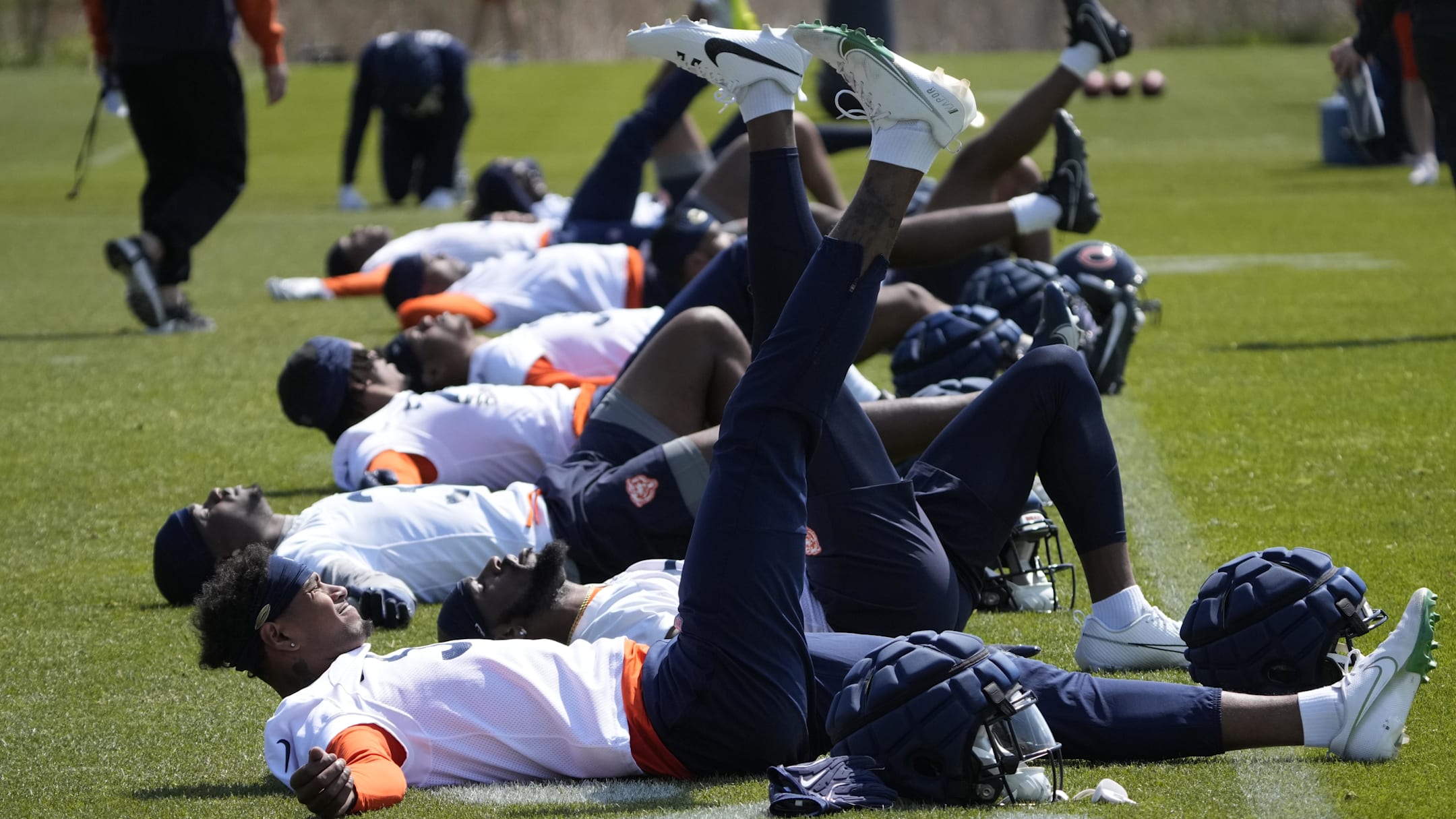The tendency is to look at the Bears as a team building an offense but with a defense already in place and waiting to win.

This is largely because of the difficult task ahead for coach Ben Johnson building offensive success from complete failure.
On the other side of the football, the defense already looked poised to win but it was at the outset of last season. They still looked like it until injuries to Andrew Billings and Jaquan Brisker combined with their offense's dead weight to drag down everything.
Picking right back up this year for the Bears defense isn't the assignment. With Johnson in charge and new defensive coordinator Dennis Allen running things, the status quo has changed.
While the Bears haven't gone straight from an attacking 4-3 to a read-and-react 3-4, their 4-3 defense will be using tactics far different than when Matt Eberflus helped GM Ryan Poles construct that side of the ball.
Many skills translate, some do not.
OTAs and minicamp helped players understand the system and the coaches to understand the talent.
So, now in camp there will be these top challenges facing Allen.
4. Cementing the roles
They didn't quite finish this in the offseason because defense requires contact up front to know things. Those in the secondary are less dependent upon it.
"I think what we've seen here from the D-line room, as a whole, we've seen a lot of guys that are pushing, they're growing," Johnson said.
Whether they can count on Dayo Odeyingbo to move inside in pass rushing situations and who they would then look to as the edge, where Gervon Dexter lines up the most, whether they start out games with Dexter or Andrew Billings next to Grady Jarrett inside and what they can expect from rookie Shemar Turner all need to be solidified with actual contact drills.
Even at linebacker there are personnel issues, like whether Noah Sewell is the third linebacker in or it's Amen Ogbongbemiga or rookie Ruben Hyppolite II -- or whether it's a combination to fit down and distance or suited to match up against specific opponents.
"Then, when we get the pads on, it's going to be a really healthy competition, as well," Johnson said.
3. Frontline foundation
This will be the first real opportunity for Allen and assistants to see how the rush looks, and that's not just edge rush backups like Dominique Robinson and Austin Booker. Whether either fills the vital third edge role is part of it, but the pass rush needs to work together across the front and not individually. In this scheme, just like in the last one, the edge has containment responsibility for the run and on scrambles. It's not all about an edge getting around the tackle.
"I do think we have some options there and certainly, that's like one of the main points of pass rush," Allen said. "Everybody talks about these speed rushers off the edge, but really it's about the interior pocket pressure that you have to have. That allows guys like Montez Sweat to be able to have some success coming off the edge.”
More than anything else, it is an opportunity to rebuild their run defense. This definitely couldn't be looked at without contact in the offseason.
There is no pass rush without stopping the run in any scheme, and the Bears bottomed out last year by going from No. 1 run defense to 28th (136.3 yards per game).
Their run defense could improve greatly simply by being on the field in training camp every day because it's ones vs. ones, and the new offense will likely use a much greater variety of blocking schemes than last season. The defensive front will be tested by all possible blocking schemes daily and benefit.
2. Altered line technique
Eberflus' scheme relied on linemen getting in the gap and attacking upfield. This scheme attacks, but attacks blockers to stack up the run. Specific players might have more gap-attacking responsibility, such as the 3-technique tackle.
"We want to strike blocks, we want to attack up front, we want to knock guys back," defensive line coach Jeremy Garrett said. "That's our mentality style that we want to be with. We want to disrupt the timing of the running back and quarterback. That's really our goal and what we want to put on tape."
One specific technique change is keeping nose tackles square when they line up, rather than slanting in toward the center. It's going to take away a half step advantage for the nose at getting on the center but also makes them less susceptible to counter blocking like a power double-team block or o an end-around play.
They'll also have more situations where linemen move just before the snap to get into a different slot and disrupt blocking.
"It's a lot of movement, a lot of things that we have to anticipate happening out there," Billings said. "That's really the biggest thing."
1. Altered coverage technique
More than anything else, the Bears defense needs to get used to the idea of playing more man-to-man coverage.
The game has evolved into one centered on passing and defending the pass. The Bears are going from a scheme relying greatly on zone coverage to one as likely to be in man-to-man coverage as it is zone.
Cornerback Tyrique Stevenson thinks allowing more man-to-man makes for better all-around skills to develop.
"Honestly, if you are a corner, you're a cover corner and you’ve got to cover the guys in this league," Stevenson said. "His (Allen's) defense allows you to go out there and build your confidence up week after week, playing man after man on any receiver."
The amount of man-to-man they'll actually play might be double what they did before or slightly more, depending on whether they're taking an approach more like Allen's Saints teams the last few years or like earlier when he had more younger players.
Because this affects defensive backs and linebackers, and their man-to-man improvement can influence when the QB is able to get rid of the ball and stay away from a hit by the rush, this is the most critical change for the Bears to master under Allen.
-1754656697-q80.webp)


